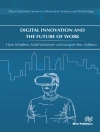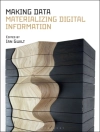Research Paper (postgraduate) from the year 2014 in the subject Design (Industry, Graphics, Fashion), grade: 1.15, Central Queensland University, course: Brand Image Design, language: English, abstract: There are nearly 4, 000 colleges and universities in the United States and almost all of these institutions have continued to attract enough students to remain operational year after year, according to Author and Marketing guru Roger Dooley (2013).
That’s about to change, and one of the key differences in who survives won’t be the academic output of the faculty or the amenities available to students. It will be a factor seemingly unrelated to the schools’ mission: branding.
(Dooley, 2013)
Nurko (2010) says that ‘branding is a vital tool for Universities to consider as they not only seek to attract the brightest students, but they also seek to attract and retain top academic faculty talent, become centres for research grants as well as attract investment funding and endowments to subsidize future growth’.
The days when Universities were simply hallowed halls of academia around the world are gone. Today, Universities are not only academic institutes but they are commercial organisations and engines of economic growth for their communities and shareholders. Universities compete for talent at both the student level, but also for faculty personnel and investment funding. Both private and public Universities are more accountable for their balance sheets, as well as for their level of academic rigour and reputation. In a world in which academia, commerce and government overlap, the role higher education plays has never been more critical – yet, at the same time more controversial. For this reason, Universities are deploying marketing and branding strategies and tactical executions which seek to help them differentiate while also compete for potential student attention, financial investment and ultimately reputation accolades.
(Nurko, 2010)
The current Harvard coat of arms certainly retains some complexity, but the question becomes – is the complexity meaningful?
Well, yes and no – but the fundamental design flaws do need to be addressed so that Harvard can retain some consistency across the board. Harvard University could definitely simplify its branding without compromising connections to its roots, but it is important to focus on the purposes for doing so.
O autorze
Nick Birch is a Media Production Professional with a Masters of Creative Enterprise.
He has been working in the creative industries since 2000: mainly as an editor for local and international television series, commercials, documentaries, short films, corporate projects and music videos. He also produces, directs, shoots, sound-designs and writes.
His extensive experience and natural affinity with clients and their vision makes him a favourite to work with, seeing the return of many satisfied customers. He has worked with TV networks, Hollywood producers, radio stations, mining magnates, airlines, actors, singers, dancers, lawyers, charities, designers, construction, children, animals, sports, tourism and even a volcanologist.
He believes in balance, loyalty, freedom, humour and truth—values which permeate his livelihood.
His enterprise is to make your story rise and shine in the most admirable, genuine, spectacular and engaging style possible.
You can see some of his work at nickbirchstudio.com












